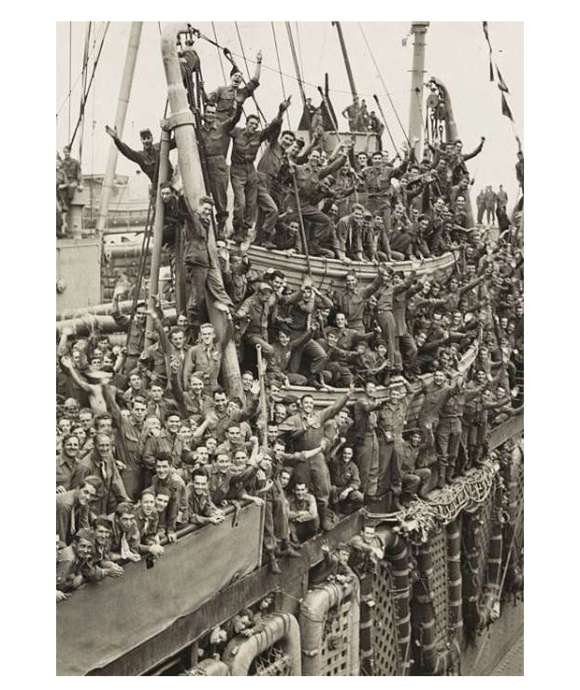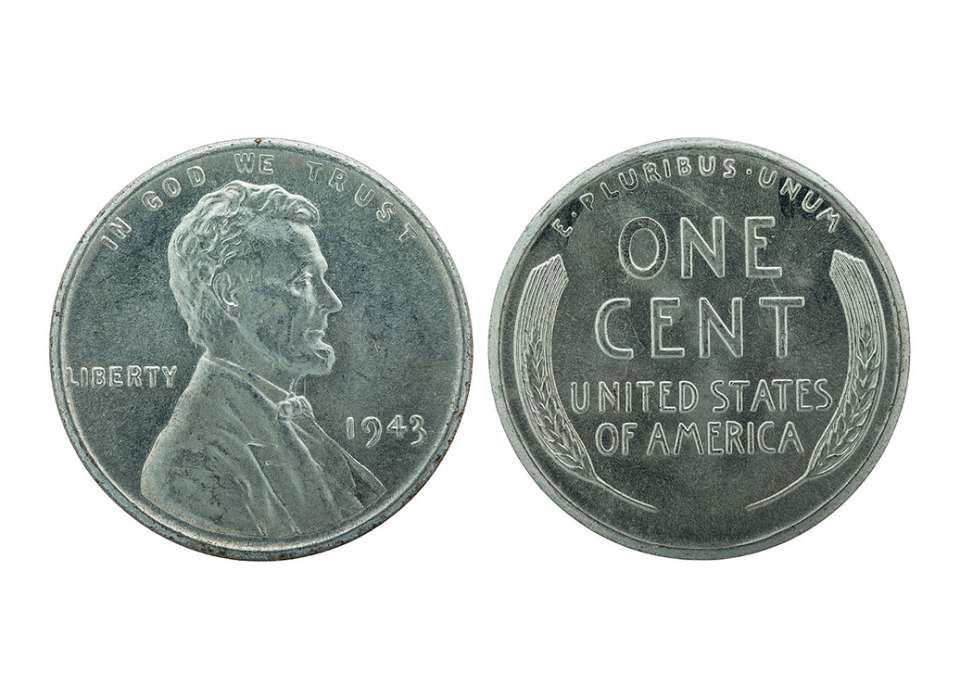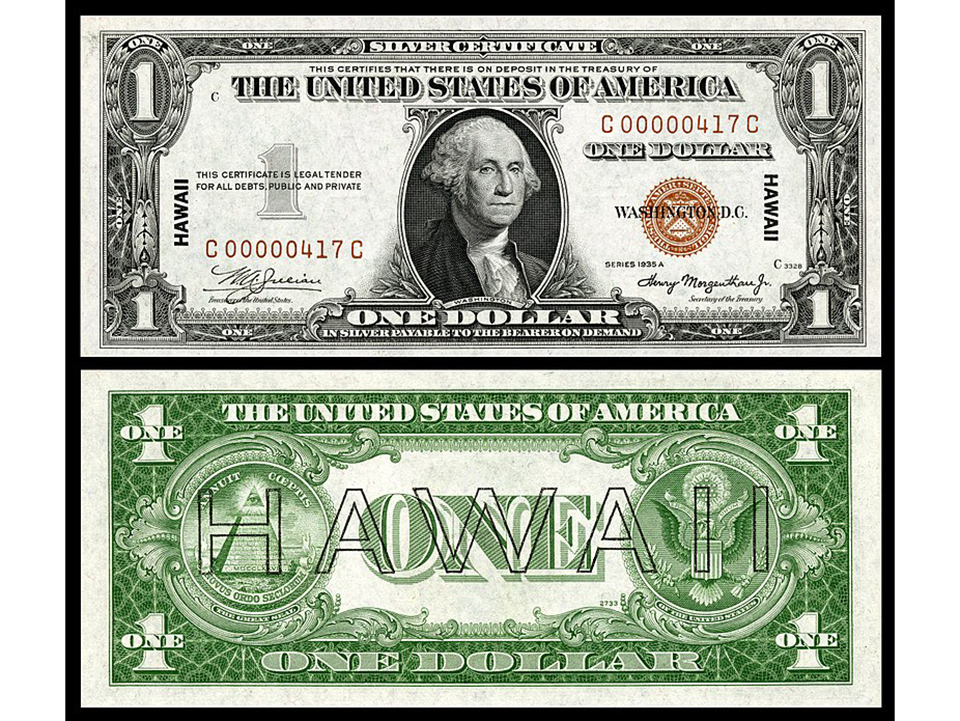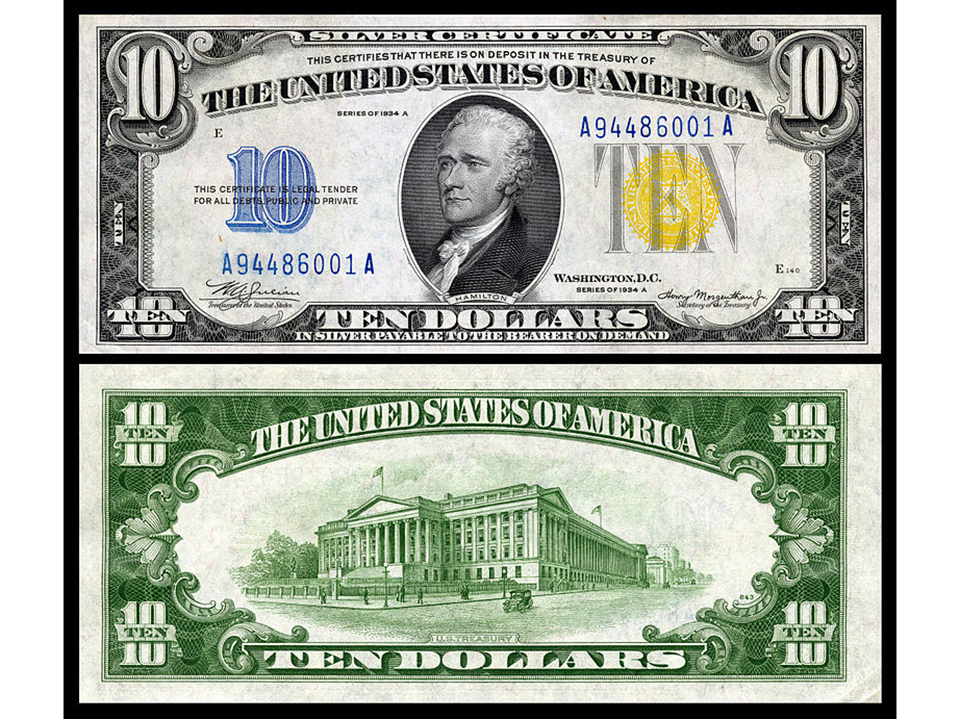Top Image: The US Mint produced steel cents in 1943 to save copper for the war effort. Courtesy National Museum of American History.
World War II was a global conflict that required belligerent nations to fully mobilize their economies in order to support their armed forces. Although the continental United States was spared destruction during the conflict, the wartime transformation of the US economy wrought many changes in Americans’ daily lives. The US government instituted rationing of commodities such as sugar, meat, gasoline, tires, and paper. Even the money in Americans’ pockets was redesigned to help win the war.
As the United States accelerated production of everything from planes and ships to tanks and artillery shells after it entered the war in December 1941, the nation faced critical shortages of copper, zinc, and tin. In response, Congress passed a bill in December 1942 that authorized the US Mint to explore the use of alternative materials for pennies in an effort to conserve thousands of pounds of industrial metals for the war effort. After experimenting with materials ranging from tempered glass to plastic, the Mint decided to change the composition of one cent coins from 95 percent copper, 4 percent zinc, and 1 percent tin to steel with a thin coating of zinc to prevent rusting. The Philadelphia, Denver, and San Francisco mints churned out nearly 1.1 billion steel cents and, in doing so, saved more than 40,000 pounds of tin for the war effort. The resulting steel cents, produced exclusively in 1943, saved enough copper to manufacture 1.25 million artillery shells.
Despite the valuable contribution of steel cents, Americans were not pleased by the change from brown to silver-colored pennies. The new coins confused vending machines because of their lighter weight, and people occasionally mistook steel cents for dimes because of their color. In response, the Mint changed the composition of pennies again in 1944. By using metal from recycled shell casings, the Mint was able to produce pennies with a composition of 95 percent copper and 5 percent zinc. This mixture restored the penny’s traditional reddish brown appearance. While steel cents lasted for just one year, the Mint produced shell case cents from 1944 to 1946.
-

Wartime nickels were made of 56 percent copper, 35 percent silver, and 9 percent manganese.
-

Wartime nickels were made of 56 percent copper, 35 percent silver, and 9 percent manganese.
The penny was not the only coin that underwent a makeover to support the war effort. The US Mint also redesigned the nickel during World War II. On March 27, 1942, Congress ordered the Mint to remove all nickel from the composition of five cent coins by October 8, 1942. In order to comply with this mandate, the Mint abandoned the coin’s prewar alloy of 75 percent copper and 25 percent nickel in favor of a new composition that consisted of 56 percent copper, 35 percent silver, and 9 percent manganese. All told, the Mint struck more than 870 million silver nickels from 1942 to 1945. The new silver five cent coins saved an estimated 800,000 pounds of nickel and 1.8 million pounds of copper for the war effort, while also not changing the weight and appearance of the coins. Americans could identify the silver nickels, however, by the large “P,” “D,” and “S” mint marks located above the image of Monticello on the coins’ reverse. The Mint purposefully placed the large mint marks on the coins so that they could be withdrawn from circulation once the wartime emergency had passed.
Some of America’s paper currency also underwent wartime alterations. Immediately after the Japanese attack on Pearl Harbor, American leaders feared a full-scale Japanese invasion of Hawaii and the continental United States. In response, the military governor of Hawaii, Lieutenant General Delos C. Emmons, instituted measures to prevent US currency circulating in the islands from falling into Japanese hands in the event of an invasion. On January 10, 1942, Emmons issued an order that restricted individuals in the Hawaiian Islands from possessing more than $200 in cash per person and $500 per business. Beginning in June 1942, the military government in the islands required Hawaiians to exchange all paper currency for newly printed bills that bore “Hawaii” in large print on the back and small print on the front. Brown seals on the front of the bills further differentiated them from peacetime issues.
The US Bureau of Engraving and Printing produced “Hawaii” notes in $1, $5, $10, and $20 denominations, and by August 15, 1942, they were the only legal tender permitted to circulate in Hawaii. The US government then burned more than 200 million dollars in prewar currency that it had withdrawn from circulation in order to eliminate the need to ship the bills back to the continental United States. The Treasury Department continued to authorize the production of “Hawaii” notes through 1944, after the immediate threat to Hawaii had passed and the tide of the Pacific War had turned decisively against Japan. Overall, the Bureau of Engraving and Printing placed more than 64 million Hawaii notes into circulation during the war. In April 1946, the United States government recalled the Hawaii notes, but many Americans saved them as wartime souvenirs.
A $10 note produced during World War II that was meant to be issued to US troops before the invasion of North Africa. Courtesy National Museum of American History.
The Bureau of Engraving and Printing created emergency wartime currency for the European theater as well. In November 1942, the government issued special notes to American soldiers in preparation for the invasion of North Africa. Soldiers used the bills for transactions among themselves but also to purchase items from civilians they encountered. The invasion of North Africa was the first American offensive in the European theater and its success was far from guaranteed. In the event German and Italian forces repelled the invasion, American commanders wanted to ensure the Axis powers would not capture large amounts of US currency. The US Treasury therefore approved invasion notes in $1, $5, and $10 denominations that bore a yellow seal instead of the traditional blue seal.
If the invasion of North Africa had failed, these easily distinguished invasion notes would have been demonetized and rendered worthless. Since the invasion was a success, however, they remain legal tender today. Ultimately, the Bureau of Engraving and Printing issued more than 130 million bills that bore yellow seals. Unlike the Hawaii notes, the North Africa invasion notes did not sport bold lettering to indicate their purpose. Nevertheless, many GIs saved them as souvenirs. The bills were also unique because in subsequent invasions in both Europe and the Pacific, the US Mint printed invasion money in the currency of the liberated nation in order to facilitate easier transactions for local peoples.
Occasionally wartime coins still turn up in Americans’ pocket change, while the more fragile paper bills are popular with collectors. Today these wartime coins and notes serve as tangible reminders of a time when the outcome of World War II was uncertain and nearly all facets of American life were altered in some way to support the Allied war effort.

The Points Were All That Mattered: The US Army’s Demobilization After World War II
When World War II ended in Europe, American soldiers feverishly began calculating how soon they might go home based on a newly instituted point system.
Tyler Bamford
Tyler Bamford was the Sherry and Alan Leventhal Research Fellow at the Institute for the Study of War and Democracy at The National WWII Museum from 2019-2021. He obtained his PhD in history from Temple University and his BA in history from Lafayette College.
Cite this article:
MLA Citation:
APA Citation:
Chicago Style Citation:







![Max Fuchs, New York City cantor, sings as Rabbi Sydney [sic] Lefkowitz, Richmond, VA, conducts the first Jewish services from Germany.](/sites/default/files/styles/max_650x650/public/2025-10/image1.jpg)



